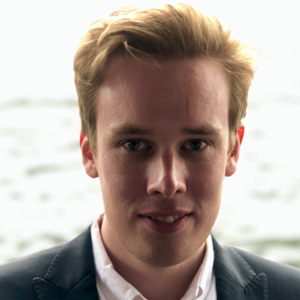Meet TTS Scholar Sebastian Andersson, Class of 2020-21
Sebastian is a Swedish scholar who is pursuing a Master of Science in Urban Planning at the Graduate School of Architecture, Planning and Preservation at Columbia University. Sebastian is focusing on the confluence of planning, politics and the preservation of the architectural modernist heritage, primarily in the Middle East. He speaks French, Arabic and Hebrew.
Can you describe for us the architectural modernist heritage of the Middle East and tell us about the experiences that provoked your interest in it?
I find it to be such a heterogeneous heritage; variously related to the West and endemic at once, often an expression of a quest for a locally rooted modernism. To me that is the real point to be made: modernism is not just Le Corbusier and Mies van der Rohe, it is an eclectic, amorphous, lively heritage. I have always been interested in architectural history, and Middle Eastern modernism in addition ties together so much I am passionate about: history, questions of identity, language, and cultural flows.
What do you hope to achieve by pursuing a Master of Science in Urban Planning at the Graduate School of Architecture, Planning and Preservation?
My hopes were always to be able to combine studies of urban planning with architectural history and preservation, to always be acutely aware of both the micro and the macro scales. Columbia is a wonderful place to do that, but it for sure is a path one has to find for oneself, it’s not given to you. I am so grateful for the deepened understanding I have gained of the complexities of the built heritage, combined with the tools of urban planning; it is something I am excited to put to use in trying to restore the modernist heritage around the world.
How did you manage the challenge of mastering languages as different as French, Arabic and Hebrew, not to even mention English!
I grew up in the heart of the Swedish farmlands, and although I grew up intensely monolingual, I have always had a penchant for other languages and cultures. I am a massive Francophile, and decided I wanted to learn French after being awestruck by its beauty at the age of 9 watching the voting of the Eurovision Song Contest (true story), and it just kind of went from there. Arabic I learned in the army, and with that solid foundation, Hebrew was very approachable.
Has the current COVID pandemic affected your thinking about architectural spaces in general?
I think we all have fallen more in love with the countryside and larger spaces, where we can breathe and be alone! I spent a few weeks last spring on Cape Cod, and it was really wonderful to rekindle that connection with a non-urban environment. Spending so much time in New York City during this past year, it has also been obvious how much the spaces of the city are given meaning by people; buildings are built by people for people to use, and so when the recipient disappears, what is there left? But I have also enjoyed that, that sort of sense of an arid urbanity. I have roamed around a lot in the city, discovering and being amazed at the small corners you have to seek out to find.
What has been the most positive aspect of the pandemic for you?
The most wonderful thing about this weird time is that I have really made NYC and my part of the city my home: spending all time here and not traveling, as well as spending almost all time at home has really made me feel like I am part of the fabric of the city. I have explored so many new parts of the city as well, from forgotten alleys to small neighborhood parks.
